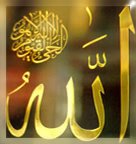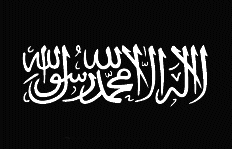| I refuse to sing Vande Mataram |
| By Prof. Kancha Ilaiah |
| With the other students in my small village school, I used to sing the first two stanzas of Vande Mataram as a boy. Though I did not understand what it meant, I used to like the song at the time. Now after 45 years, as I witness the raging debate over the song, I have to think about what the song means to Dalit-Bahujans and in what context its author, Bankim Chandra Chatterjee, wrote it. To my shock, I discover that the song was written to instigate Hindu sanyasis to make a communal attack against Muslims in the novel Anandamath. As is well known, maths are Hindu spiritual shrines where only Brahmin sanyasis are allowed to live. Tribals, Dalits and Sudras have no place in these hallowed maths even today. Shankara maths, the epicentres of Hinduism, are the best examples of this Brahminic Hindu culture. In the mid-and late-19th century, when Bankim lived and wrote his books, even Sudras could not enter these maths, leave alone Dalits. Bankim was a contemporary of Mahatma Jyotirao Phule whose book Gulamgiri (Slavery) on abolition of caste was published in the 1850s. In Kerala, even in those days, the festival Onam was being celebrated in praise of Bali Chakravarthi, a victim of the Brahmin Vamana, considered one of the avatars of Vishnu. Even in Bengal, William Carey, the creative evangelist, had started working among tribals and lower castes by having the Bible translated into the people's Bengali language, and not the Brahminical Bengali of Bankim. When Bankim wrote Anandamath, which was published as a full-length novel in 1882 (it was earlier serialised in his journal) he had already witnessed the 1857 sepoy rebellion, in which Hindu (mainly upper caste) and Muslim soldiers participated. Those were the times when preparations were being made to launch the Indian National Congress. In this atmosphere of national reforms and anti-colonial struggle, why did Bankim write a novel with Brahmin sanyasis as protagonists revolting against the Muslims and not the British? The reason could be that quite a lot of Dalit-Bahujan castes and tribals must have been moving into Islam. As M.J Akbar noted in his recent book Blood Brothers, conversion of masses of people into Islam had made Hindus a minority in East Bengal. Caste oppression and the control of Brahminism over Hinduism was the main reason for the productive masses moving into Islam. Brahmin intellectuals like Bankim were obviously more worried about the exodus into Islam than colonial rule. It was probably as a representative of the Brahminic social force that Bankim wrote that novel. Vande Mataram is a song that instigates. It is not a liberating song. There is no reformative appeal in it. The weapon-wielding Durga is the prime metaphor around which the song was woven. It was written to embolden the sanyasis to rebel against the Muslims. Who were these Muslims? The majority of them were SCs, STs and OBCs who moved into Islam because of the caste oppression within Hinduism. Did Bankim ask only the sanyasis to salute Mother Durga or did he address the entire nation including SCs, STs, OBCs and minorities to build a socially harmonious and egalitarian nation? There is no reference to the social mass and its productive ethics in the song. In Aurobindo's translation of the song it reads: "Thou art Durga, Lady and Queen, With her hands that strike and sword of sheen, Thou art Lakshmi Lotus-throned." From the above stanza there is no doubt that the song was meant to instigate violence. It invokes Goddess Durga, whose iconic form shows her holding a trishul and wearing a garland of human heads. This cannot be taken as a symbol of a woman's revolt against patriarchy. We know that Bengal is one of the most patriarchal regions in India. The openly displayed violent Goddess or God images were essentially meant to protect and perpetuate the system of Varnadharma. Bengali nationalist writers used the violent Durga image to fortify Bhadralok Brahminism. What is the relationship of Durga, Lakshmi and Saraswati with the SCs, STs and OBC masses? In Bengal, Sudras and Namsudras have no right to priesthood. The situation is the same all over India. Spiritual untouchability is an existential reality. Neither Marxist rule of the last 25 years nor the general democratic rule of last 60 years has changed caste cultural relations in Bengal and India. When Vande Mataram was adopted as a national song it was done with a deeply internalised Brahminic view. It was only after Muslim scholars objected that two stanzas, which do not make direct reference to Durga, were adopted. But the repeatedly uttered "mother" does refer to Durga, with whom the Dalit-Bahujan masses cannot mediate as dignified human beings. The song stands against the annihilation of caste and untouchability and that was why the Sangh Parivar adopted it. It essentially represents Hindu Brahminism. As an OBC I would never sing Vande Mataram as it represents Bhadralok Brahminism and not the nation as whole. Professor Kancha Ilaiah is Professor of Sociology at the Osmania University, Hyderabad and author of "Why I am not a Hindu." |
Search This Blog
Tuesday, July 21, 2009
I refuse to sing Vande mataram
Subscribe to:
Post Comments (Atom)





No comments:
Post a Comment